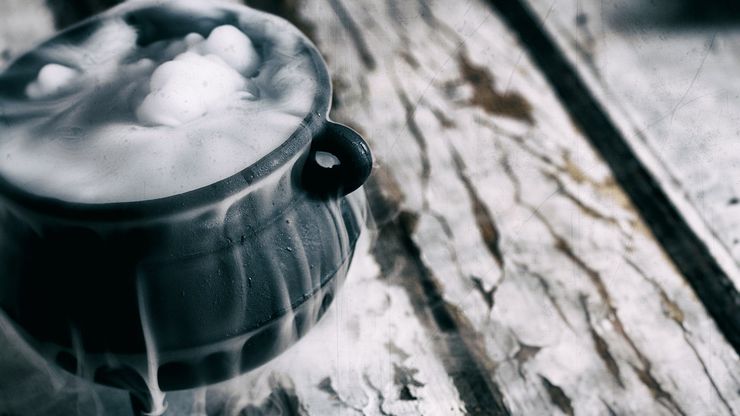Halloween poem: 'Double, double, toil and trouble'
In keeping with the spirit of All Hallow's Eve,here's the song of the Witches from Macbeth, one of William Shakespeare's darkest and most famous tragedies.

The mysterious witches who have prophesied Macbeth's ascent to the throne of Scotland chant this haunting rhyme while brewing a potion. Their spells and prophecies cause Macbeth more harm than good, for at the end of the play both the villainous Macbeth and his power-hungry wife suffer grisly fates.
by William Shakespeare
A cavern. In the middle, a caldron boiling. Thunder.
Enter the three witches.
Double, double, toil and trouble;
Fire burn, and cauldron bubble.
Fillet of a fenny snake,
In the cauldron boil and bake;
Eye of newt and toe of frog,
Wool of bat and tongue of dog,
Adder's fork and blind-worm's sting,
Lizard's leg and owlet's wing,
For a charm of powerful trouble,
Like a hell-broth boil and bubble.
Double, double, toil and trouble;
Fire burn, and cauldron bubble.
Scale of dragon, tooth of wolf,
Witches' mummy, maw and gulf
Of the ravin'd salt-sea shark,
Root of hemlock digg'd i' the dark,
Scale of dragon, tooth of wolf,
Witches' mummy, maw and gulf
Of the ravin'd salt-sea shark,
Root of hemlock digg'd i' the dark,
Add thereto a tiger's chaudron,
For the ingredients of our cauldron.
Double, double, toil and trouble;
Macbeth
by William Shakespeare
Dark and violent, Macbeth is also the most theatrically spectacular of Shakespeare’s tragedies. Promised a golden future as ruler of Scotland by three sinister witches, Macbeth murders the king to ensure his ambitions are realized. But he soon learns the meaning of terror - killing once, he must kill again and again, and the dead return to haunt him. A story of war and witchcraft, Macbeth also explores the relationship between husband and wife, and the risks they are prepared to take to achieve their desires.
This Macmillan Collector’s Library edition is illustrated throughout by renowned artist Sir John Gilbert (1817-1897), and features and introduction by Dr Robert Mighall.



